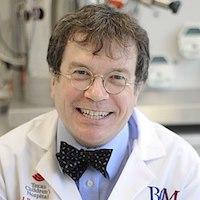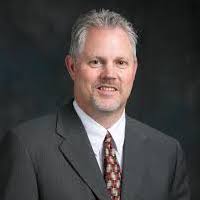When you click on a sponsoring school or program advertised on our site, or fill out a form to request information from a sponsoring school, we may earn a commission. View our advertising disclosure for more details.
“As a scientific community, we begged for a proactive stance instead of a reactive one. Even if it costs money that we don’t want to spend, an ounce of prevention is better than a pound of cure. That will always be true.”
– Dr. Rodney E. Rohde, Professor and Chair of the Clinical Laboratory Science Program at Texas State University
Despite the mounting pressure on the government to let communities return to their normal routines, the delicate process of navigating the COVID-19 (SARS-CoV-2) pandemic is still far from over, especially in the U.S.
While other countries including Canada, Iceland, New Zealand, and China managed to flatten their curves in late April, the U.S. surpassed one million total cases and became the world epicenter of the virus—far from a “green light” to relax restrictions.
Social distancing measures have helped keep the U.S. healthcare system from being overwhelmed, but in turn, have debilitated the economy. Nearly one-third of Americans have experienced job or income disruption as a result of the coronavirus situation, according to Gallup, and the unemployment rate is expected to rise to at least 16 percent by June 2020.
With the hope of actually stopping the spread of the virus long gone and limitations on the healthcare system’s capacity, many have begun to think of a potential vaccine as the key to salvation.
In early March, Dr. Anthony Fauci, the head of the National Institute of Allergy and Infectious Diseases (NIAID) said that a vaccine could be ready in 12 to 18 months, a timetable that has been echoed in countless headlines.
But scientists warn that hinging our hopes on the delivery of a miracle vaccine that will rescue us from our current situation could be a recipe for disappointment.
At present, dozens of labs across the globe are working ardently to develop a vaccine for COVID-19, but at this point, it’s difficult to narrow down when—or even if—an effective vaccine will ever be found.
We talked to two world-renowned virology experts to ask what they think the future holds.
Meet the Experts: Dr. Peter Hotez and Dr. Rodney E. Rohde

Dr. Peter Hotez is an expert on infectious diseases, co-director of Texas Children’s Hospital Center for Vaccine Development, and was previously chair of microbiology at George Washington University.
A decade ago, Dr. Hotez helped create the National School of Tropical Medicine in Texas, where he is the dean. He also is a founding editor-in-chief of the influential scholarly journal PLOS Neglected Tropical Diseases.
He and his team are currently working on a vaccine for COVID-19.

Dr. Rodney E. Rohde is a widely published specialist of virology, microbiology, and molecular biology. He serves as the associate dean for research, department chair, and professor in the clinical laboratory science program within the College of Health Professions at Texas State University.
Prior to joining academia, Dr. Rohde spent a decade as a public health microbiologist and molecular epidemiologist at the Texas Department of State Health Services Bureau of Laboratories and Zoonosis Control Division.
A Missed Opportunity With a Similar Virus
The first week of March was a pivotal moment for the U.S. The first coronavirus-related deaths in the country had occurred just days before, and President Trump was still holding off on declaring a national emergency. But the seriousness and time-sensitivity of the situation were becoming undeniable.
On March 5, a group of congressmen and scientists, including Dr. Hotez, gathered on Capitol Hill to discuss the quickly developing outbreak in the U.S., as well as the potential development of a vaccine and how fast one could be produced.
In his testimony, Dr. Hotez revealed that we could be much closer to introducing one to market if his lab had been able to move its SARS vaccine through clinical trials back in 2016. This turned out to be a galling missed opportunity for scientists to get ahead of COVID-19 because of the similarities between the two viruses.
At the time that Dr. Hotez’s team was pursuing funding for clinical trials, the outbreak of the 2003 SARS coronavirus had already long passed. Knowing there was a chance a similar virus could emerge in the future, Dr. Hotez had wanted to get ahead of what he calls the “big scientific challenge of coronavirus vaccines” related to a phenomenon known as vaccine-induced enhancement.
The immune pathology was first observed in the 1960s when a vaccine for respiratory syncytial virus (RSV) outbreak ended up causing 80 percent of the subjects to be hospitalized and two deaths.
“It’s something that we and others have noticed in laboratory animals, that sometimes certain vaccines can make things worse when you get infiltrates of cells into the lungs or the liver,” which is also characteristic of coronaviruses, Dr. Hotez explained.
During the development of the SARS vaccine, an exciting breakthrough that prevents the phenomenon from occurring was discovered.
“We collaborated with a unique group that figured out how to solve the problem. If you narrow it down to the smallest subunit—the piece that’s called the receptor binding domain that docks with the receptor—you get protection and you don’t get that immune enhancement phenomenon,” Dr. Hotez said.
His team was able to manufacture 20,000 doses of a coronavirus vaccine, but wasn’t able to find the money to take it any further because the interest of investors had faded. Since then, the units have been stored away in a lab freezer.
“If it had gone through safety testing, it would have definitely accelerated things,” Dr. Hotez said. “Now, we could have maybe been moving into phase III clinical trials for efficacy.”
Since then, Hotez’s team has been able to show that their SARS vaccine cross reacts to COVID-19 in the lab, which means it could cross-protect against COVID-19. Had they been able to start clinical trials four years ago, we’d be in a different situation today.
Now there’s no hotter pursuit than finding a viable coronavirus vaccine. Dozens of labs all over the world, including Dr. Hotez’s, are scrambling to find investors to push their versions into clinical trials.
But even with ample funding, the challenges with developing vaccines for coronaviruses that scientists like Dr. Hotez have known about for years deem Dr. Fauci’s year-and-a-half estimate unlikely.
Let’s take a look at exactly what scientists are up against.
Developing Vaccines: Obstacles and Unknowns
SARS of 2003 and MERS of 2012 have both provided valuable intel on COVID-19, as all three are in the coronavirus family. But there are some attributes of the novel coronavirus that set it apart from its predecessors and create dark spots in scientists’ understanding of the virus.
Thankfully, COVID-19 has the lowest mortality rate of the three diseases. Some cases are intense, while others are very mild, and many are completely asymptomatic. But the variance in the severity of COVID-19 cases makes it difficult to understand how many people it’s really affecting and how the virus works.
Another big unanswered question is related to immunity and how long it lasts.
“Usually when the body endures an infection, it creates memory B cells that go into a state of dormancy until they are challenged by that virus again,” Dr. Rohde said. “Depending on the virus, sometimes we don’t mount a really strong response—it’s just different for different bugs.”
Dr. Hotez said that most patients that contracted the original SARS developed an antibody response that lasted for several years. Scientists are hoping to see a similar immune response in the new coronavirus.
Data on antibody levels in patients that have already had COVID-19 is limited, but a recent study in Shanghai of 175 people showed that most recovered coronavirus patients had very low levels of antibodies in their blood after recovery, and in some cases, none at all.
“We are starting to hear about a subset of people, especially those with low-grade symptoms or no symptoms, that are not producing a very robust antibody response, but hopefully those will not be the majority of individuals,” Dr. Hotez said.
On the contrary, Dr. Hotez said he thinks that most people with COVID-19 will have a strong immune response, more akin to SARS. But if it turns out the small study is representative of the bigger picture, what does that mean for the potential to create a vaccine?
“You always like a vaccine to be able to reproduce the immunity that occurs in nature, but there are vaccines that are being developed that try to do better than nature,” Dr. Hotez said. “That’s true for TB [tuberculosis] vaccines, malaria, as well and some of our parasitic vaccines, where experience with the infection does not confer protection. It’s much harder to do and it makes it a little more complicated,” Dr. Hotez said, but it’s certainly possible.
That’s not the only potential complication associated with creating a coronavirus vaccine. The aforementioned vaccine-induced enhancement phenomenon will still need to be taken into account throughout clinical trials to avoid another scenario in which a vaccine backfires.
These complicating factors are why some scientists have made the grim prediction that a vaccine may never be found. But according to Dr. Rohde, it’s not a question of whether or not scientists will be able to develop any vaccine; rather, the question is how effective the potential vaccines will be.
“Hopefully, there will be a vaccine that will create a strong and long lasting response so that it is highly effective,” he said. Most childhood vaccines are 85 to 95 percent effective according to the WHO, which is ideal.
“But if we can’t get that, then we’ll get the best we can. Sometimes the flu vaccine is in the range of 50 to 65 percent effective, which is still much better than zero.”
Dr. Rohde says even a coronavirus vaccine that is effective for half of people would still be useful. “It would be a tool to help calm down the fatalities and buy more time to work on other vaccines.”
So how much time do vaccines typically take to hit the market?
The Vaccine Pipeline
At any stage, if data raises concerns about the safety of the vaccine, the FDA may halt ongoing studies, prolonging development. Even in ideal circumstances, the three-phase process of getting a vaccine approved takes years. Dr. Hotez gave the example of a highly effective vaccine for ebola which was discovered in 2015 and wasn’t approved until 2019. That’s why Fauci’s 12- to 18-month timeline seems unrealistic to scientists.
According to the World Health Organization (WHO), six potential COVID-19 vaccines have already been approved for clinical trials and about 70 are in pre-clinical evaluation. This may sound like overkill, but it’s not.
“The reason you need so many vaccine candidates is most of them drop out,” Dr. Hotez said. “On average, any given vaccine only has about a 6 to 10 percent likelihood of success. So, you need to get 20 or 30 out there before you get a couple that really work.”
Dr. Hotez’s team is pushing to move its SARS vaccine into phase I trials soon. “The nice thing about ours is that we already have several years of pre-clinical data in laboratory animals showing that it works and that it has a good safety profile,” he said. Their second vaccine specifically for COVID-19 will follow behind.
Looking Forward: The Quest for a COVID-19 Vaccine
The spotlight on COVID-19 has highlighted underlying issues the scientific community faces in getting funding for research that we need to address moving forward, which Dr. Rohde and Dr. Hotez are both vocal about.
“Multiple administrations in the U.S. missed opportunities going way back,” Dr. Rohde said. “As a scientific community, we begged for a proactive stance instead of a reactive one. Even if it costs money that we don’t want to spend, an ounce of prevention is better than a pound of cure. That will always be true.”
As Dr. Hotez wrote in his prepared remarks for Congress, “An investment of a few million dollars for clinical trials and stockpiling of this vaccine could have saved ten billion or even maybe one hundred billion dollars [in economic damage].”
This is not just a criticism of the U.S. government, but of other G20 nations, such as China, Russia, Japan, and Brazil, which should offer more aid in future efforts to protect public health, Dr. Hotez says.
There is still plenty of room for optimism as we continue to learn more about how to manage the disease and identify potential treatments, but the public shouldn’t hold its breath for a cure-all or a quick fix. According to Rohde, we should get ready for a new era characterized by new social norms: “I think this pandemic event, much like 9/11 changed air travel, will be looked back on as an event that changed the landscape of personal responsibility around infection prevention.”
But like so many unknowns about the novel coronavirus, the true legacy of the pandemic is still yet to be seen.
